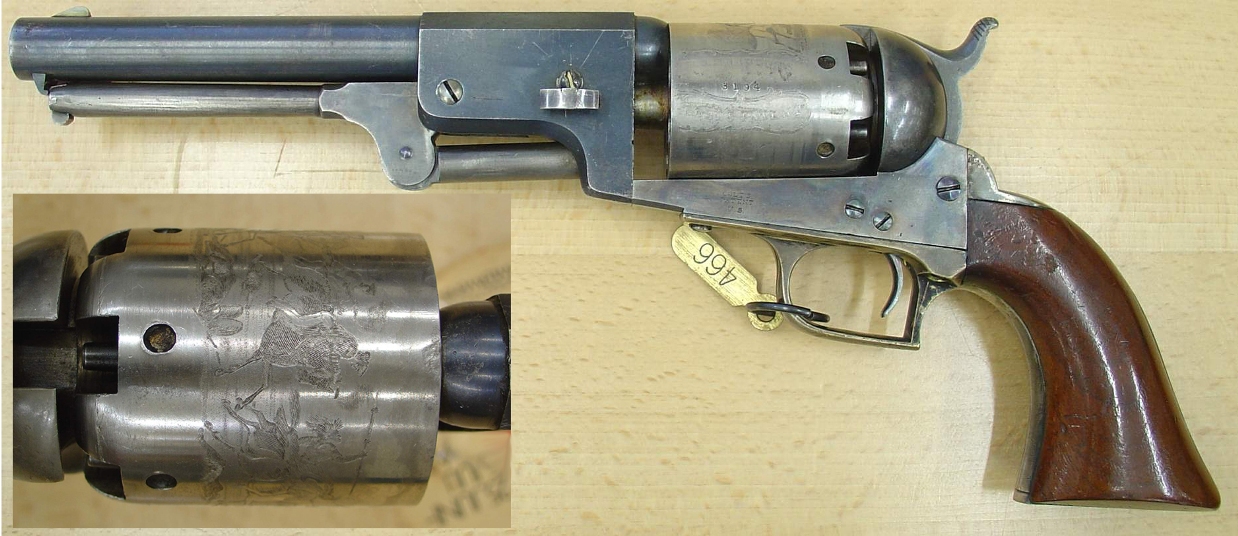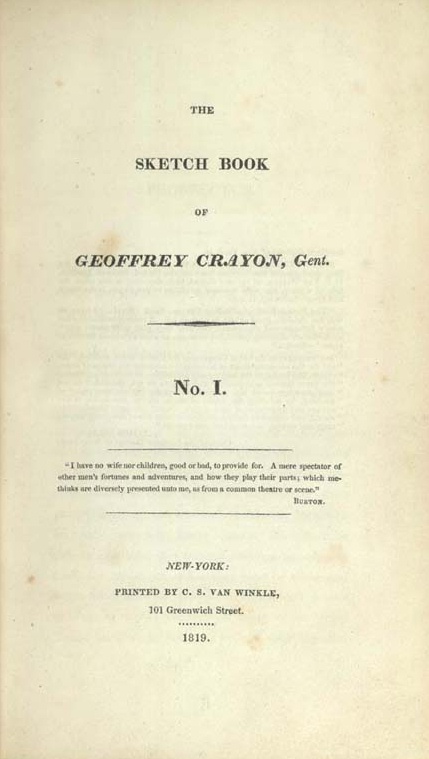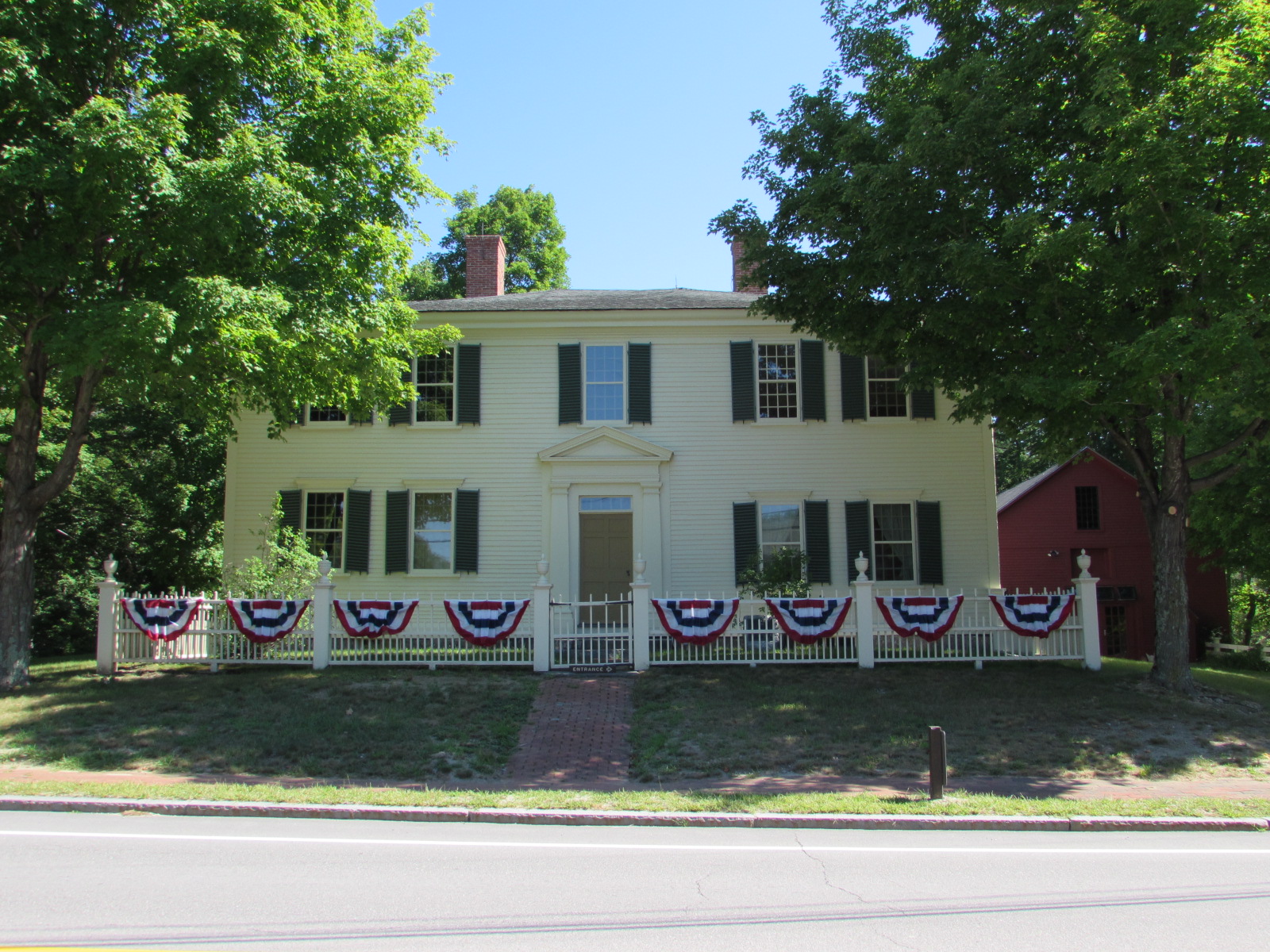|
Waterman Ormsby
Waterman Lily Ormsby (September 9, 1809 – November 1, 1883) was an American engraver and inventor who founded the Continental Bank Note Company and invented a pantographic engraving machine called the grammagraph to produce "roll-die" engraving on metal. Early life Ormsby was born in Hampton, Connecticut and became an apprentice in an engraving shop at a young age. In 1829, he attended the National Academy of Design in New York City. Upon graduating he moved to Albany, New York where he engraved over his own name for a few years then to Lancaster, Massachusetts, where he worked for the firm of Carter, Andrews & Co. Eventually, he settled in New York City where he founded the New York Bank Note Company and became one of the founders of the Continental Bank Note Company. He married Julia Ann Brainard in 1830 and they divorced in 1846. Engraving Ormsby was an excellent line engraver and was called upon for a great deal of work for bank notes were in wide use by the Government at th ... [...More Info...] [...Related Items...] OR: [Wikipedia] [Google] [Baidu] |
Hampton, Connecticut
Hampton is a town in Windham County, Connecticut, United States. The population was 1,728 at the 2020 census. Geography According to the United States Census Bureau, the town has a total area of , of which, is land and (1.96%) is water. History Hampton is made up of lands originally shared by the towns of Pomfret and Windham. It was incorporated from the towns of Pomfret, Brooklyn, Canterbury, Mansfield, and Windham in 1786. The Congregational Church is the second oldest church in the state still in use, with portions of the structure dating from 1754. Also preserved is "The House the Women Built," a two-story building built in 1776 by Sally Bowers and other young women of the town while the men fought in the Continental Army. At Clark's Corner there is a liberty pole dating from 1849. Erected by a resident named Jonathan Clark, it records the distance to Hartford and other towns. Notable locations * Hampton Hill Historic District – added to the National Register of Histor ... [...More Info...] [...Related Items...] OR: [Wikipedia] [Google] [Baidu] |
Colt Firearms
Colt's Manufacturing Company, LLC (CMC, formerly Colt's Patent Firearms Manufacturing Company) is an American firearms manufacturer, founded in 1855 by Samuel Colt and is now a subsidiary of Czech holding company Colt CZ Group. It is the successor corporation to Colt's earlier firearms-making efforts, which started in 1836. Colt is known for the engineering, production, and marketing of firearms, most especially between the 1850s and World War I, when it was a dominating force in its industry and a seminal influence on manufacturing technology. Colt's earliest designs played a major role in the popularization of the revolver and the shift away from earlier single-shot pistols. Although Samuel Colt did not invent the revolver concept, his designs resulted in the first very successful ones. The most famous Colt products include the Colt Walker, made in 1847 in the facilities of Eli Whitney Jr., the Colt Single Action Army or Peacemaker, the Colt Python, and the Colt M1911 pist ... [...More Info...] [...Related Items...] OR: [Wikipedia] [Google] [Baidu] |
Maria Monk
Maria Monk (June 27, 1816 – summer of 1849) was a Canadian woman whose book ''Awful Disclosures of Maria Monk,'' or, ''The Hidden Secrets of a Nun’s Life in a Convent Exposed'' (1836) claimed to expose systematic sexual abuse of nuns and infanticide of the resulting children by Catholic priests in her convent in Montreal. The book is considered by scholars to be an anti-Catholic hoax. ''Awful Disclosures of Maria Monk'' was published in January 1836. In it, Monk claimed that nuns of the Religious Hospitallers of St. Joseph of the Montreal convent of the Hôtel-Dieu, whom she called "the Black Nuns", were forced to have sex with the priests in the seminary next door. The priests supposedly entered the convent through a secret tunnel. If the sexual union produced a baby, it was baptized and then strangled and dumped into a lime pit in the basement. Uncooperative nuns disappeared. Monk's story contains various inconsistencies. In her account, she stated that there were three con ... [...More Info...] [...Related Items...] OR: [Wikipedia] [Google] [Baidu] |
Rip Van Winkle
"Rip Van Winkle" is a short story by the American author Washington Irving, first published in 1819. It follows a Dutch-American villager in colonial America named Rip Van Winkle who meets mysterious Dutchmen, imbibes their liquor and falls asleep in the Catskill Mountains. He awakes 20 years later to a very changed world, having missed the American Revolution. The concept is ancient, including the 70-year nap by Choni HaMeA-Gail. Irving, inspired by a conversation on nostalgia with his American expatriate brother-in-law, wrote his story while temporarily living in Birmingham, England. It was published in his collection, ''The Sketch Book of Geoffrey Crayon, Gent.'' While the story is set in New York's Catskill Mountains near where Irving later took up residence, he admitted, "When I wrote the story, I had never been on the Catskills." Plot Rip Van Winkle, a Dutch-American man with a habit of avoiding useful work, lives in a village at the foot of New York's Catskill Mount ... [...More Info...] [...Related Items...] OR: [Wikipedia] [Google] [Baidu] |
Thomas Hamblin
Thomas Souness Hamblin (14 May 1800 – 8 January 1853) was an English actor and theatre manager. He first took the stage in England, then immigrated to the United States in 1825. He received critical acclaim there, and eventually entered theatre management. During his tenure at New York City's Bowery Theatre he helped establish working-class theatre as a distinct form. His policies preferred American actors and playwrights to British ones, making him an important influence in the development of early American drama. Although he was known as a fair (if shrewd) businessman, Hamblin's reputation was marred by his well-known womanising and brawling. He had affairs with several up-and-coming actresses at his theatre, and he assaulted at least two newspaper editors who had published unflattering stories about him. His behaviour eventually cost him his first wife and resulted in one conviction for assault. Early life and stage career Hamblin was born in Pentonville, England. He appren ... [...More Info...] [...Related Items...] OR: [Wikipedia] [Google] [Baidu] |
Franklin Pierce
Franklin Pierce (November 23, 1804October 8, 1869) was the 14th president of the United States, serving from 1853 to 1857. He was a northern Democrat who believed that the abolitionist movement was a fundamental threat to the nation's unity. He alienated anti-slavery groups by signing the Kansas–Nebraska Act and enforcing the Fugitive Slave Act. Conflict between North and South continued after Pierce's presidency, and, after Abraham Lincoln was elected president in 1860, Southern states seceded, resulting in the American Civil War. Pierce was born in New Hampshire. He served in the U.S. House of Representatives from 1833 until his election to the Senate, where he served from 1837 until his resignation in 1842. His private law practice was a success, and he was appointed New Hampshire's U.S. Attorney in 1845. He took part in the Mexican–American War as a brigadier general in the Army. Democrats saw him as a compromise candidate uniting Northern and Southern interests, ... [...More Info...] [...Related Items...] OR: [Wikipedia] [Google] [Baidu] |
New York Herald
The ''New York Herald'' was a large-distribution newspaper based in New York City that existed between 1835 and 1924. At that point it was acquired by its smaller rival the ''New-York Tribune'' to form the '' New York Herald Tribune''. History The first issue of the paper was published by James Gordon Bennett Sr., on May 6, 1835. The ''Herald'' distinguished itself from the partisan papers of the day by the policy that it published in its first issue: "We shall support no party—be the agent of no faction or coterie, and we care nothing for any election, or any candidate from president down to constable." Bennett pioneered the "extra" edition during the ''Heralds sensational coverage of the Robinson–Jewett murder case. By 1845, it was the most popular and profitable daily newspaper in the United States. In 1861, it circulated 84,000 copies and called itself "the most largely circulated journal in the world." Bennett stated that the function of a newspaper "is not to ... [...More Info...] [...Related Items...] OR: [Wikipedia] [Google] [Baidu] |
Morse Alphabet
Morse code is a method used in telecommunication to encode text characters as standardized sequences of two different signal durations, called ''dots'' and ''dashes'', or ''dits'' and ''dahs''. Morse code is named after Samuel Morse, one of the inventors of the telegraph. International Morse code encodes the 26 basic Latin letters through , one accented Latin letter (), the Arabic numerals, and a small set of punctuation and procedural signals ( prosigns). There is no distinction between upper and lower case letters. Each Morse code symbol is formed by a sequence of ''dits'' and ''dahs''. The ''dit'' duration is the basic unit of time measurement in Morse code transmission. The duration of a ''dah'' is three times the duration of a ''dit''. Each ''dit'' or ''dah'' within an encoded character is followed by a period of signal absence, called a ''space'', equal to the ''dit'' duration. The letters of a word are separated by a space of duration equal to three ''dits'', a ... [...More Info...] [...Related Items...] OR: [Wikipedia] [Google] [Baidu] |
Samuel Morse
Samuel Finley Breese Morse (April 27, 1791 – April 2, 1872) was an American inventor and painter. After having established his reputation as a portrait painter, in his middle age Morse contributed to the invention of a single-wire telegraph system based on European telegraphs. He was a co-developer of Morse code and helped to develop the commercial use of telegraphy. Personal life Samuel F. B. Morse was born in Charlestown, Massachusetts, the first child of the pastor Jedidiah Morse (1761–1826), who was also a geographer, and his wife Elizabeth Ann Finley Breese (1766–1828). His father was a great preacher of the Calvinist faith and supporter of the Federalist Party. He thought it helped preserve Puritan traditions (strict observance of Sabbath, among other things), and believed in the Federalist support of an alliance with Britain and a strong central government. Morse strongly believed in education within a Federalist framework, alongside the instillation of Calvin ... [...More Info...] [...Related Items...] OR: [Wikipedia] [Google] [Baidu] |
Geometric Lathe
A geometric lathe was used for making ornamental patterns on the plates used in printing bank notes and postage stamps. It is sometimes called a guilloché lathe. It was developed early in the nineteenth century when efforts were introduced to combat forgery, and is an adaptation of an ornamental turning lathe. The lathe was able to generate intersecting and interlacing patterns of fine lines in various shapes, which were almost impossible to forge by hand-engraving. They were used by many national mints. Further reading *Peter Bower, 'Economic warfare: Banknote Forgery as a deliberate weapon', and Maureen Greenland, 'Compound plate printing and nineteenth-century bank notes, in Virginia Hewitt, ed. ''The Banker's Art: Studies in paper money'', pp 46–63, and pp 84–87, The British Museum Press, 1995, () See also * Security printing * Spirograph * Tusi couple * Guilloché Guilloché (; or guilloche) is a decorative technique in which a very precise, intricate and repe ... [...More Info...] [...Related Items...] OR: [Wikipedia] [Google] [Baidu] |
Colt Model 1855 Sidehammer Pocket Revolver
The Colt Model 1855 Sidehammer, also known as the Colt Root Revolver after engineer Elisha K. Root (1808–1865), was a Caplock mechanism, cap & ball single-action pocketrevolver used during the American Civil War and made by the Colt's Manufacturing Company, Colt's Patent Fire Arms Manufacturing Company Calibers and variants In the revolver configuration of the patented revolving mechanism, only one model of the revolver was produced. Two calibers for the revolver were: .28 and .31. The production of the revolver started in 1855 and lasted until 1870. In spite of the complexity and ambition of its patented design, the Sidehammer revolver never reached the status of a popular gun. , a Museum dealing with the people and the history of ... [...More Info...] [...Related Items...] OR: [Wikipedia] [Google] [Baidu] |
Colt 1851 Navy Revolver
The Colt Revolving Belt Pistol or Navy Pistol, sometimes erroneously referred to as "Colt Revolving Belt Pistol of Naval Caliber" or "of Navy Caliber" (Naval is heavy gun and Navy Size Caliber was termed later for another Colt model), is a cap and ball revolver that was designed by Samuel Colt between 1847 and 1850. Colt first referred to this Revolver as the Ranger Size model, and then Revolving Belt, but the designation "Navy" quickly took over. After the Civil War, revolvers using fixed metallic cartridges came into widespread use. The Colt Navy remained in production until 1873, being replaced in the Colt line with what would become one of the manufacturer's most famous handguns, the Colt Single Action Army (also known as the ''Peacemaker'' and ''Colt 45''). Total production numbers of the Colt 1851 Navy Revolver were exceeded only by the Colt Pocket models in concurrent development, and numbered some 215,000 domestic units and about 42,000 produced in the Colt London Armory. ... [...More Info...] [...Related Items...] OR: [Wikipedia] [Google] [Baidu] |





